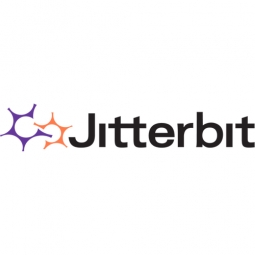下载PDF
ZirMed
技术
- 应用基础设施与中间件 - 数据交换与集成
- 应用基础设施与中间件 - API 集成与管理
适用行业
- 医疗保健和医院
适用功能
- 商业运营
服务
- 系统集成
- 数据科学服务
挑战
ZirMed 有紧迫的时间表来将他们自己开发的客户支持票务系统迁移到 Salesforce。除了从他们已有 10 年历史的客户支持应用程序迁移数据外,ZirMed 还希望将所有客户数据同步到 Salesforce。这样一来,他们的运营团队就可以从 Salesforce 内部访问他们需要的所有数据,无论这些数据最初是否是在 ZirMed 自己开发的应用程序中创建的。挑战在于将客户支持数据从已有 10 年历史的自己开发的应用程序迁移到 Salesforce,并同步数据,以便运营团队可以在 Salesforce 内访问所有客户信息。他们还需要提供一个强大但易于维护的集成平台,不需要外部专家。
关于客户
ZirMed 是全国公认的为医疗保健提供商提供收入周期管理解决方案的领导者。它为 100,000 多家医疗保健提供商提供服务。ZirMed 利用技术的力量来减轻管理负担并增加现金流,使提供商不仅能够生存,而且能够蓬勃发展。ZirMed 被《Inc.》杂志评为 5000 家发展最快的公司之一,并被《医疗信息学》杂志评为 100 强公司之一。
解决方案
ZirMed 选择了 Jitterbit,这是一款功能强大、灵活且易于使用的数据和应用程序集成软件。Jitterbit 被一家知名系统集成商推荐为唯一用于集成的工具。它易于使用且部署迅速,允许 ZirMed 提前自行配置集成。Jitterbit 在 ZirMed 票务和计费应用程序与新采用的 Salesforce 应用程序之间实现了无缝集成。它还将历史数据迁移到 Salesforce。
运营影响
数量效益
相关案例.

Case Study
Hospital Inventory Management
The hospital supply chain team is responsible for ensuring that the right medical supplies are readily available to clinicians when and where needed, and to do so in the most efficient manner possible. However, many of the systems and processes in use at the cancer center for supply chain management were not best suited to support these goals. Barcoding technology, a commonly used method for inventory management of medical supplies, is labor intensive, time consuming, does not provide real-time visibility into inventory levels and can be prone to error. Consequently, the lack of accurate and real-time visibility into inventory levels across multiple supply rooms in multiple hospital facilities creates additional inefficiency in the system causing over-ordering, hoarding, and wasted supplies. Other sources of waste and cost were also identified as candidates for improvement. Existing systems and processes did not provide adequate security for high-cost inventory within the hospital, which was another driver of cost. A lack of visibility into expiration dates for supplies resulted in supplies being wasted due to past expiry dates. Storage of supplies was also a key consideration given the location of the cancer center’s facilities in a dense urban setting, where space is always at a premium. In order to address the challenges outlined above, the hospital sought a solution that would provide real-time inventory information with high levels of accuracy, reduce the level of manual effort required and enable data driven decision making to ensure that the right supplies were readily available to clinicians in the right location at the right time.

Case Study
Gas Pipeline Monitoring System for Hospitals
This system integrator focuses on providing centralized gas pipeline monitoring systems for hospitals. The service they provide makes it possible for hospitals to reduce both maintenance and labor costs. Since hospitals may not have an existing network suitable for this type of system, GPRS communication provides an easy and ready-to-use solution for remote, distributed monitoring systems System Requirements - GPRS communication - Seamless connection with SCADA software - Simple, front-end control capability - Expandable I/O channels - Combine AI, DI, and DO channels

Case Study
Driving Digital Transformations for Vitro Diagnostic Medical Devices
Diagnostic devices play a vital role in helping to improve healthcare delivery. In fact, an estimated 60 percent of the world’s medical decisions are made with support from in vitrodiagnostics (IVD) solutions, such as those provided by Roche Diagnostics, an industry leader. As the demand for medical diagnostic services grows rapidly in hospitals and clinics across China, so does the market for IVD solutions. In addition, the typically high cost of these diagnostic devices means that comprehensive post-sales services are needed. Wanteed to improve three portions of thr IVD:1. Remotely monitor and manage IVD devices as fixed assets.2. Optimizing device availability with predictive maintenance.3. Recommending the best IVD solution for a customer’s needs.

Case Study
HaemoCloud Global Blood Management System
1) Deliver a connected digital product system to protect and increase the differentiated value of Haemonetics blood and plasma solutions. 2) Improve patient outcomes by increasing the efficiency of blood supply flows. 3) Navigate and satisfy a complex web of global regulatory compliance requirements. 4) Reduce costly and labor-intensive maintenance procedures.

Case Study
Harnessing real-time data to give a holistic picture of patient health
Every day, vast quantities of data are collected about patients as they pass through health service organizations—from operational data such as treatment history and medications to physiological data captured by medical devices. The insights hidden within this treasure trove of data can be used to support more personalized treatments, more accurate diagnosis and more advanced preparative care. But since the information is generated faster than most organizations can consume it, unlocking the power of this big data can be a struggle. This type of predictive approach not only improves patient care—it also helps to reduce costs, because in the healthcare industry, prevention is almost always more cost-effective than treatment. However, collecting, analyzing and presenting these data-streams in a way that clinicians can easily understand can pose a significant technical challenge.






